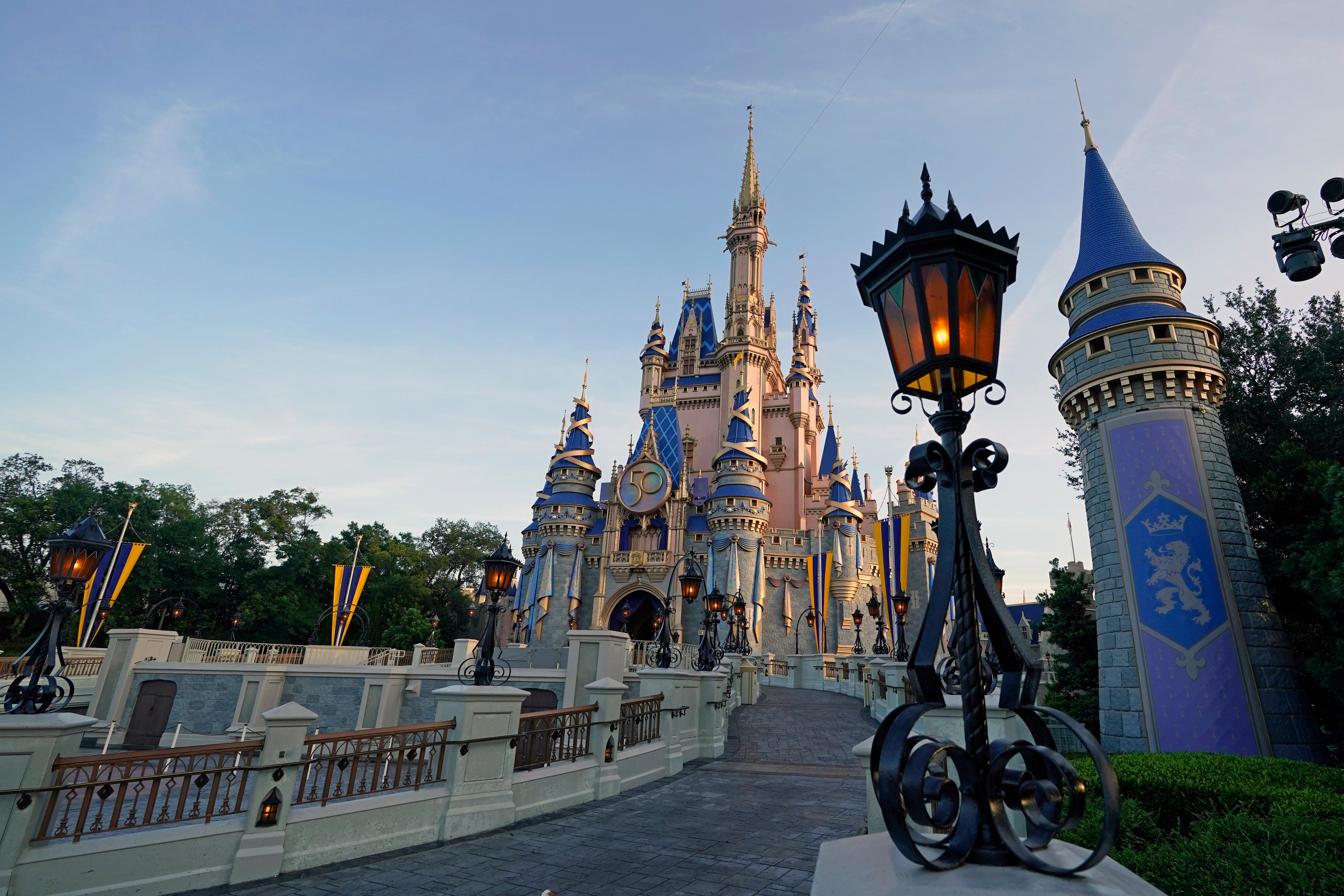Tourism and economic agencies join forces to market Orlando
It's an idea that almost seems as compatible as Mickey and Minnie

Your support helps us to tell the story
From reproductive rights to climate change to Big Tech, The Independent is on the ground when the story is developing. Whether it's investigating the financials of Elon Musk's pro-Trump PAC or producing our latest documentary, 'The A Word', which shines a light on the American women fighting for reproductive rights, we know how important it is to parse out the facts from the messaging.
At such a critical moment in US history, we need reporters on the ground. Your donation allows us to keep sending journalists to speak to both sides of the story.
The Independent is trusted by Americans across the entire political spectrum. And unlike many other quality news outlets, we choose not to lock Americans out of our reporting and analysis with paywalls. We believe quality journalism should be available to everyone, paid for by those who can afford it.
Your support makes all the difference.It's an idea that almost seems as compatible as Mickey and Minnie. Take the tens of millions of tourists who are thinking about visiting central Florida's theme parks each year and sell them on the virtues of moving their companies or businesses to the region. In the half-century that Orlando has been a tourism hub, it had not been done, until now.
The quasi-public agencies that usually promote tourism and economic development separately in Orlando on Monday announced they are joining forces to market the region together under a single brand. With a tagline of “Unbelievably Real," the branding plan will be aimed at tourists, meeting planners, conventioneers, business relocation specialists, site selectors, business owners and company CEOs. Around $23 million will be spent on it this year.
The branding plan was announced as officials reported that 59.3 million tourists came to Orlando in 2021. That represents a 68% increase over 2020's pandemic-stricken numbers, but it is still less than 80% of 2019's pre-pandemic figures.
“Looking at 2021, we started seeing some really strong numbers," said Casandra Matej, president and CEO of Visit Orlando.
The branding plan highlights Orlando’s economic strengths in digital game development and military simulation, combined with its tourist attractions, outdoor activities and its cultural, sports and food scenes. It will start Monday with television and digital ads in New York, Chicago and Boston, as well as a mural in Brooklyn, New York.
The goal is tell “the entire story of Orlando," Matej said. “While we may have different target audiences, there's a lot of connection between those audiences."
With the growth of remote working during the pandemic, the timing of the joint branding seemed right, officials said.
“The same person making a corporate relocation decision is probably the same person bringing their family to Orlando and has probably attended a meeting here in the last couple of years," said Tim Giuliani, president and CEO of Orlando Economic Partnership. “When people come to us about relocating to Orlando, it's not their first time in Orlando. It's a global brand."
Read more: Best Orlando hotels
Walt Disney World is celebrating its 50th anniversary this year, and a long-awaited Guardians of the Galaxy ride at its Epcot park is opening later this month. But it's just not rides that stand to lure more visitors.
Orlando International Airport is nearing completion on its largest expansion ever, adding 15 gates that can accommodate an additional 10 million to 12 million passengers annually. The private Brightline train service also is expanding within the next year to Orlando, offering a two-hour ride from South Florida to the Orlando airport.
The expanded capacity at Orlando International Airport represents another synergy between tourism and economic development. Driven by the tourism market, the expansion will bring more airlines and travel routes to Orlando, making the area more attractive to companies or businesses that want to relocate, Giuliani said.
“It creates tremendous connectivity," Giuliani said. “As more companies have global interests, concerns, connectivity, that ease in and out allows Orlando to compete with any city."
The tourism numbers released Monday by Visit Orlando reflect the ways visitors coming to Orlando were affected by pandemic restrictions. The 2021 increase over 2020 was driven by domestic visitors, with business and international tourists lagging in growth. While domestic visitations grew by 70%, it grew only by almost 54% for business and 25.7% for international travelers.
In an effort to control the coronavirus, the U.S. imposed border restrictions on non-essential travel from Canada and Mexico. Many of those restrictions were lifted last November, but international travelers are still required to be vaccinated and those traveling by air must show a negative coronavirus test.
Domestic leisure visits in 2021 were 85% of those in 2019, before the pandemic. The numbers in 2021 were two-thirds of those in 2019 for domestic business travel and less than a third for international visits.
After the U.S. dropped some pandemic restrictions last November, Orlando started seeing upticks in international visitors from its most popular, Matej said.
“As soon as the rules of engagement changed in November, we started seeing real interest from our core markets," Matej said. “We're expecting by 2023 for international to be 100% recovered."
___
Follow Mike Schneider on Twitter at https://twitter.com/MikeSchneiderAP.